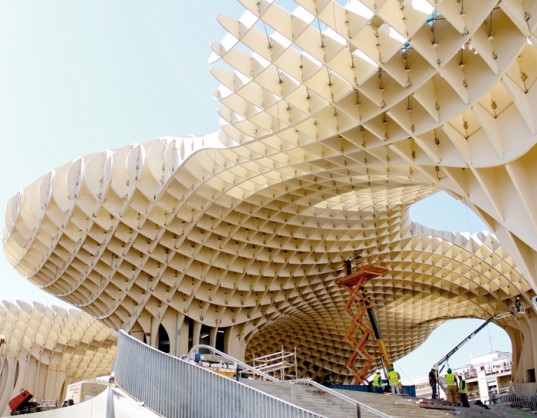One thing is for sure. We are finding ourselves in an era in which the long established concepts are reinvented over and over again. Whether it’s technology, economy or design, renewing is the driving force. Companies that use concepts as: Sustainability, ‘green’, renewable energy, open platforms, fair trade or social responsibility in their mission statements do not seem to suffer from the crisis. On the contrary, they seem to grow against all odds! Let’s look at some highlighted architectural projects of 2011 applying these statements*:
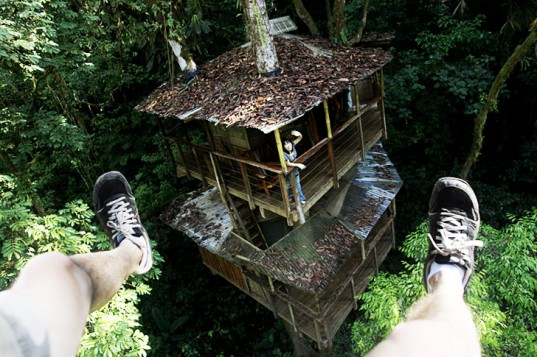
Finca Bellavista, Costa Rica: Described as the world’s first planned, modern, sustainable, and truly arboeal treehouse community, this neighbourhood nestled in the rainforest canopy has a skyline speckled with treehouses and is the perfect second home. Located in the south Pacific coastal region of Costa Rica, the comfy yet rustic private retreat welcomes people (and non-humans) to get off the beaten path and explore the wonders of rainforest living. Read more…
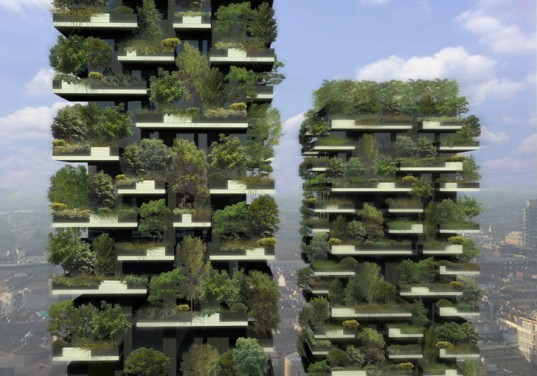
Vertical Forest, Milan: green vertical towers that integrate plant life into their facade, but unlike many of those designs, here’s one that goes beyond being a mere concept. Designed by Stefano Boeri – architect, academic and former editor of design and architecture magazine Domus – his Bosco Verticale is a towering 27-story structure, currently under construction in Milan, Italy. Once complete, the tower will be home to the world’s first vertical forest. Read more…
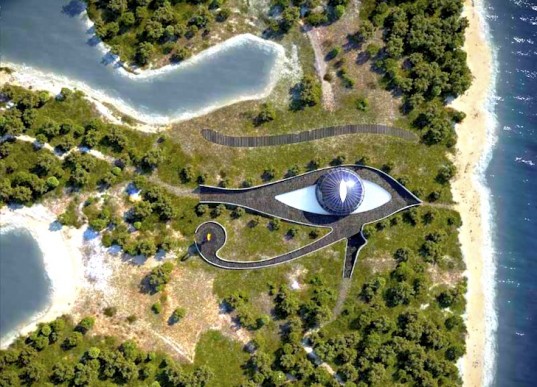
Eco House, Eye of Horus, Turkey: Architect Luis de Garrido has designed a glass domed house for Naomi Campbell that is completely energy and water self-sufficient and features an amazing indoor landscaped terrace. Everything about this concept house is a dream: its comfortable microclimate, its constant flow of air, light and heat when necessary, its superior landscaping, and of course the fact that it was built on the Isla Playa de Cleopatra in Turkey (notice the Egyptian theme.) Read more…
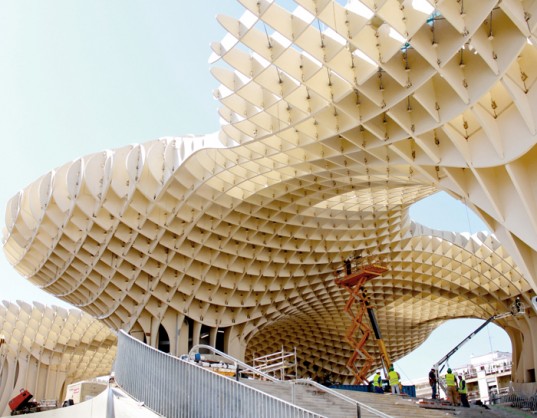
The world’s largest wooden structure, Seville: The Metropol Parasol in Seville, Spain, by Jurgen Mayer H. Architects, is the world’s largest wooden structure. This amazing design is finally complete! Located at Plaza de la Encarnacion, the beautiful series of undulating parasols comprise the world’s largest wooden structure. Metropol’s interlocking honeycomb of wooden panels rise from concrete bases, which are positioned to form canopies and walkways below the parasols. Read more…
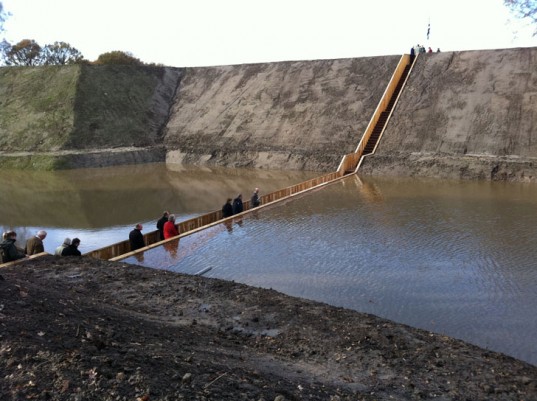
Sunken pedestrian bridge, the Netherlands: No, your eyes are not deceiving you – the waters have indeed parted! This incredible “sunken” bridge located in the Netherlands is giving visitors a unique way to access a beautiful 17th Century Dutch fort. Designed by RO & AD Architects, the Moses Bridge literally parts the waters that surround the fort, allowing pedestrians to pass through. The bridge is made from sustainable Accsys TechnologiesAccoya wood, which is both FSC and PEFC certified. Read more…
*Source: www.inhabitat.com
In Andalusia we’ve noticed the first steps towards these new concepts in design as well. Driven by the passion of their clients, architects are inspired to create eco-houses by using sustainable materials and implementing renewable energy sources. We also see a new trend in more sustainable landscape development. I would like to mention for example an exclusive vineyard estate where local varieties of vines were recovered from extinction to create a sophisticated signature wine. However this is just the beginning. In 2012, despite the crisis, this will be taken a big step forward. This is Andalusia’s future!
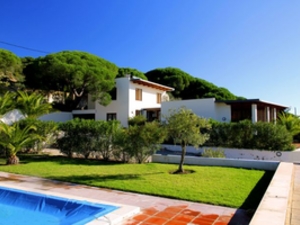
Eco House, Vejer de la Frontera
This Eco villa in Vejer de la Frontera has a very good quality, double ventilated foundations, reinforced concrete retaining walls, double glazing, double insulation, northern pine (pino Flandres). The Villa has been designed by the Portuguese architect Carlos Castanheira, who is known for his authenticity in architecture and usage of natural materials. He worked in close association with the famous price winning Portuguese architect Alvaro Siza who defines his work as an expression of the ultimate simplism.
David Verbaan | 31st December 2011
